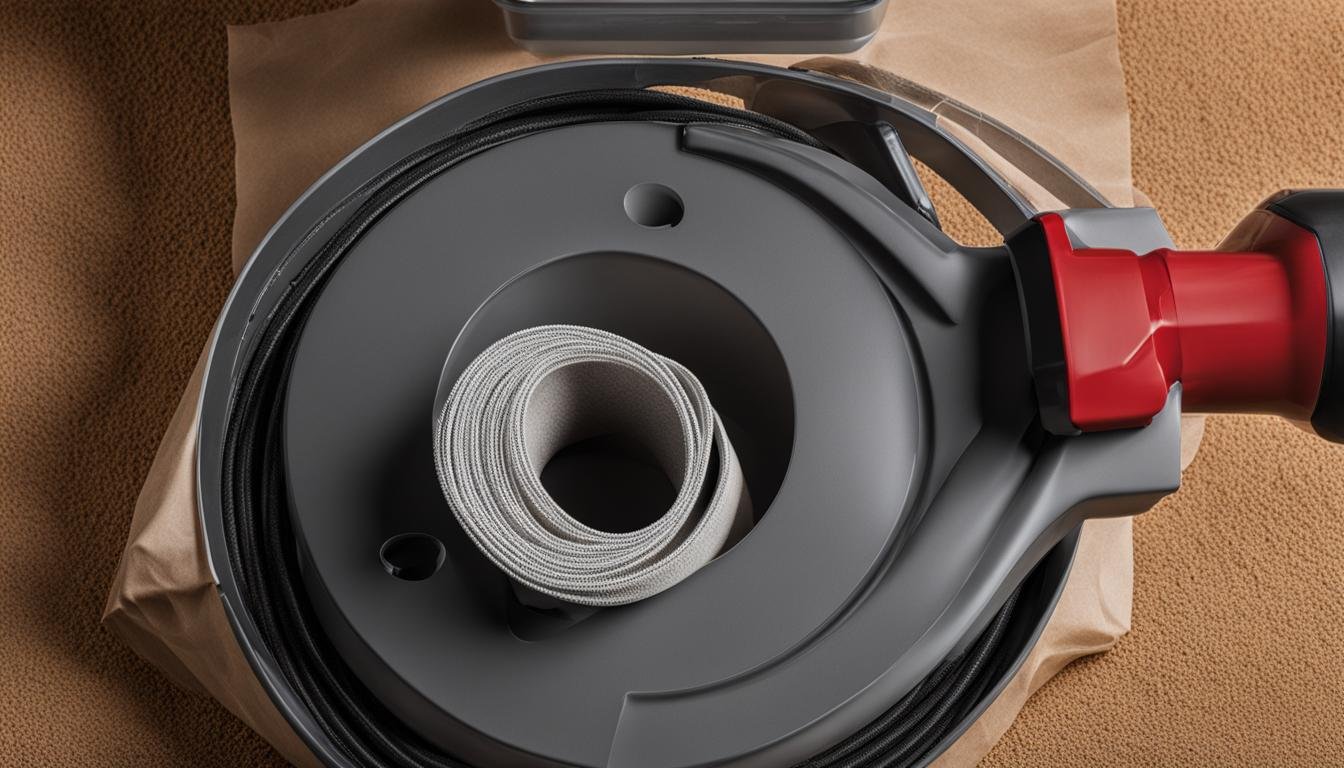When it comes to sanding wood projects, one of the biggest challenges is dealing with the dust it creates. However, by attaching your sander to a vacuum cleaner, you can greatly minimize the mess and make your sanding tasks cleaner and easier. Here are some tips and techniques to help you attach your sander to a vacuum cleaner effectively.
Key Takeaways:
- Attaching your sander to a vacuum cleaner can greatly reduce the mess created by sanding wood projects.
- Maximize your sander’s dust collection capability by blowing out the filter regularly and connecting it to a shop vacuum using a hose and adapter kit.
- Create a DIY dustless sanding system by attaching a vacuum adapter to your sander’s blower exhaust and connecting it to a shop vacuum or vacuum cleaner.
- A dustless sanding system can help protect your lungs from airborne dust particles and eliminate the need for heavy cleanup.
- Ensure you choose the right size adapter for your sander and vacuum hose to create a secure attachment.
Maximize Your Sander’s Dust Collection Capability
When it comes to sanding wood, a crucial aspect to consider is proper dust collection. While many sanders come with built-in dust collection systems, they may not always be efficient in capturing all the dust particles. To ensure a cleaner and healthier working environment, there are several steps you can take to maximize your sander’s dust collection capability.
Regular Filter Maintenance
One of the simplest and most effective ways to enhance your sander’s dust collection is by regularly cleaning or replacing the filter or fabric of the dust collection system. Over time, dust can accumulate and clog the filter, reducing its efficiency. By blowing out the filter or fabric on a regular basis, you can remove trapped dust and restore the system’s optimal performance.
Connect to a Shop Vacuum
To significantly improve your dust collection, consider connecting your sander to a shop vacuum using a hose and adapter kit. This DIY sander vacuum setup allows the vacuum cleaner to capture a larger volume of dust directly from the sander, preventing it from spreading into the air or settling on your working surface. Choose an adapter kit that matches the diameter of your sander’s dust port and the hose of your shop vacuum for a secure and efficient connection.
| Sander Dust Collection Tips | Sander Dust Collection Benefits |
|---|---|
| Blow out the filter regularly | Improves dust collection efficiency |
| Connect to a shop vacuum | Increases dust capture capacity |
| Use a tool-activated outlet | Ensures automatic vacuum activation during sanding |
Tool-Activated Outlet
Another useful tool for maximizing dust collection when using a sander is a tool-activated outlet. This device senses when the sander is in use and automatically turns on the shop vacuum connected to it. With a tool-activated outlet, you no longer need to manually switch on the vacuum every time you start sanding, ensuring that dust is immediately captured and contained.
Create Your DIY Dustless Sanding System
If you’re tired of the mess and hassle of sanding wood projects, I have a solution for you. With just a few simple steps, you can create your own dustless sanding system using a vacuum cleaner. No need to spend a fortune on specialized equipment – all you need is a vacuum adapter, a shop vacuum or vacuum cleaner, and your sander.
To get started, measure the diameter of the blower exhaust on your sander and the hose on your vacuum. This will ensure you get the right size adapter for a secure and efficient attachment. Once you have the adapter, attach it to the sander’s blower exhaust and connect it to the hose of the vacuum. It’s as simple as that!
Now, when you start sanding, the vacuum cleaner will suck up the wood dust directly, leaving your workspace clean and dust-free. Not only will this save you time and effort on cleanup, but it will also protect your lungs from harmful airborne dust particles.
Sanding with a vacuum is a game-changer for any DIY enthusiast or professional woodworker. By using a vacuum cleaner sanding attachment, you can achieve professional-quality results without the messy aftermath. Say goodbye to dusty workspaces and hello to a cleaner, healthier sanding experience.
FAQ
How do I attach my sander to a vacuum cleaner?
To attach your sander to a vacuum cleaner, you can use a hose and adapter kit to connect the two. Alternatively, you can purchase a vacuum adapter that is compatible with your specific sander model and attach it to the blower exhaust of your sander, connecting it to the hose of the vacuum cleaner.
How can I maximize my sander’s dust collection capability?
To maximize dust collection, regularly blow out the filter or fabric of your sander’s dust collection system. Additionally, consider connecting your sander to a shop vacuum using a hose and adapter kit, and use a tool-activated outlet to automatically turn on the vacuum whenever the sander is in use.
Can I create a dustless sanding system with any brand of sander?
Yes, you can create a dustless sanding system with any brand of sander. All you need is a vacuum adapter, a shop vacuum or vacuum cleaner, and your sander. Measure the diameter of the blower exhaust on your sander and the hose on your vacuum to ensure you get the right size adapter. Attach the adapter to the sander’s blower exhaust and connect it to the hose of the vacuum. This setup will suck the wood dust directly into the vacuum, providing a dust-free sanding experience.





Leave a Reply